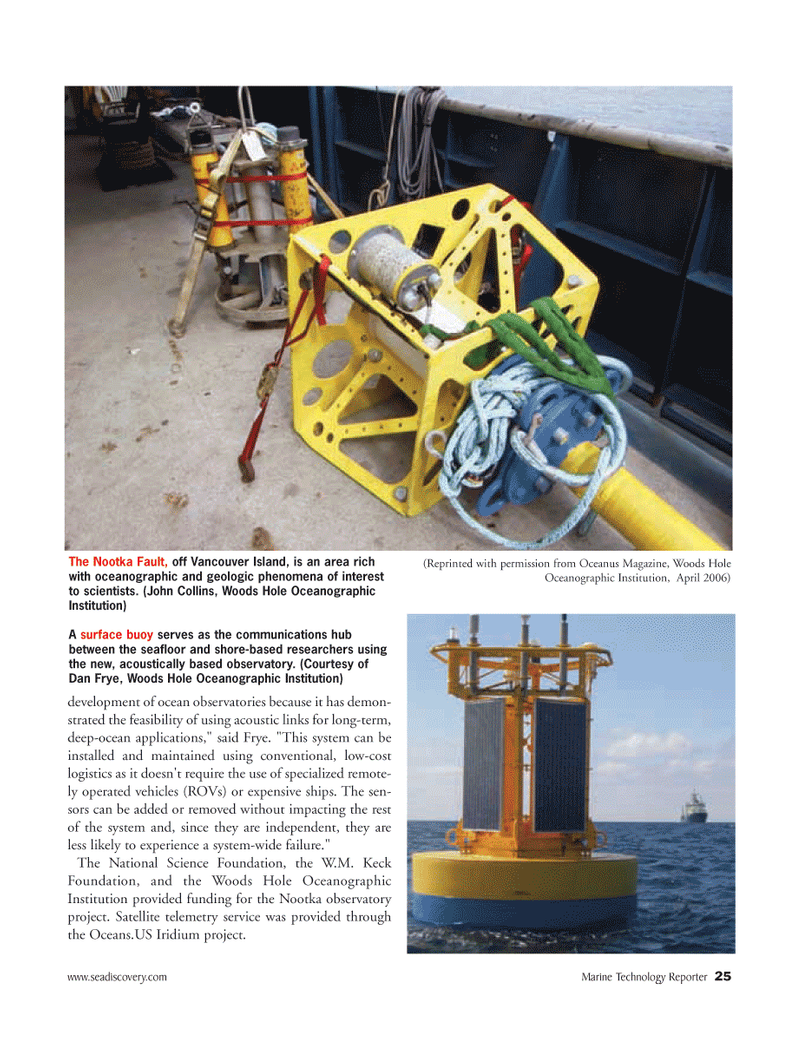
Page 25: of Marine Technology Magazine (May 2006)
The Communications Edition
Read this page in Pdf, Flash or Html5 edition of May 2006 Marine Technology Magazine
www.seadiscovery.com Marine Technology Reporter 25 development of ocean observatories because it has demon- strated the feasibility of using acoustic links for long-term, deep-ocean applications," said Frye. "This system can be installed and maintained using conventional, low-cost logistics as it doesn't require the use of specialized remote- ly operated vehicles (ROVs) or expensive ships. The sen- sors can be added or removed without impacting the rest of the system and, since they are independent, they are less likely to experience a system-wide failure."
The National Science Foundation, the W.M. Keck
Foundation, and the Woods Hole Oceanographic
Institution provided funding for the Nootka observatory project. Satellite telemetry service was provided through the Oceans.US Iridium project. (Reprinted with permission from Oceanus Magazine, Woods Hole
Oceanographic Institution, April 2006)
The Nootka Fault, off Vancouver Island, is an area rich with oceanographic and geologic phenomena of interest to scientists. (John Collins, Woods Hole Oceanographic
Institution)
A surface buoy serves as the communications hub between the seafloor and shore-based researchers using the new, acoustically based observatory. (Courtesy of
Dan Frye, Woods Hole Oceanographic Institution)
MTR#4 (17-32).qxd 5/8/2006 9:55 AM Page 25

 24
24

 26
26
